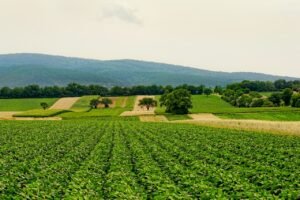
Have you ever wondered how fresh produce is grown right in the heart of the city? In this article, we will take you on a journey through the fascinating world of urban farming in Kedah, Malaysia. From rooftop gardens to vertical farming, Kedah has embraced this sustainable and innovative method of agriculture. Join us as we explore the thriving urban farms in Kedah and learn how they are revolutionizing the way we think about food production in urban environments. Get ready to be inspired by the creativity and dedication of the farmers who are making a difference in their community through urban farming.

Benefits of Urban Farming
Increased access to fresh produce
Urban farming provides the opportunity for residents in urban areas to have increased access to fresh produce. Traditional farming practices often rely on large-scale production and transportation, which can lead to delays in getting fresh food to consumers. However, with urban farming, the proximity of the farms to urban communities allows for quicker harvest and delivery. This means that consumers can have access to fruits, vegetables, and herbs that are fresher, tastier, and more nutritious.
Reduction in food miles
Food miles refer to the distance that food travels from the farm to the consumer. By practicing urban farming, the food production is brought closer to the consumers, resulting in a significant reduction in food miles. This reduction in transportation also helps to lower carbon emissions associated with the delivery of produce from rural farms. By reducing food miles, urban farming contributes to a more sustainable and environmentally-friendly food system.
Improved food security
Urban farming plays a crucial role in improving food security in urban areas. Cities often depend heavily on external sources for their food supply, which can lead to vulnerabilities in the event of disruptions in the supply chain. By cultivating food within the city, urban farming helps to diversify and strengthen the local food system. This improves the resilience of communities by ensuring a consistent and reliable supply of fresh produce, even in times of crisis.
Opportunities for community engagement
One of the significant benefits of urban farming is the opportunities it provides for community engagement. Urban farms often serve as gathering spaces where residents can come together, learn about farming practices, and actively participate in growing their food. Community gardens, for example, allow individuals to rent and manage small plots, fostering a sense of ownership and community pride. Urban farming also provides a platform for education and skill-sharing, bringing people of all ages and backgrounds together. This social aspect of urban farming promotes community bonding and a sense of shared responsibility for the local environment and food system.
Challenges of Urban Farming
Limited space for farming
One of the primary challenges of urban farming is the limited space available for cultivating crops. In densely populated urban areas, finding suitable land for farming can be a significant hurdle. As buildings and infrastructure take up most of the available space, urban farmers need to be creative in utilizing and maximizing the use of limited land. This often involves techniques such as vertical farming, rooftop gardens, and utilizing indoor spaces like basements and warehouses for hydroponic or aeroponic systems.
Potential for contamination
Urban farming faces the challenge of potential contamination of produce due to environmental pollutants found in urban areas. Industrial emissions, vehicle exhaust, and other pollutants can negatively impact the quality and safety of the food produced. Urban farmers must take precautions and implement measures such as soil testing and proper water filtration systems to ensure the safety of their crops. Additionally, educating the public about the importance of food safety and practicing safe handling and preparation methods are crucial in minimizing the risk of contamination.
Lack of expertise and resources
Urban farming requires knowledge and skills in various aspects of agricultural practices, including crop selection, soil management, pest control, and irrigation techniques. Many urban farmers face the challenge of limited knowledge and expertise in these areas. However, there are resources available such as community workshops, online courses, and mentorship programs that can help urban farmers acquire the necessary knowledge and skills. Collaborative efforts between experienced farmers, agricultural organizations, and local universities can also provide valuable support and guidance to urban farmers.
Zoning and regulatory issues
Another challenge faced by urban farming is navigating zoning and regulatory issues. Urban areas often have specific regulations and zoning restrictions that may limit the types and scale of agricultural activities allowed. Farmers may encounter challenges in obtaining necessary permits and approvals for their urban farming operations. It is crucial for urban farmers to work closely with local authorities and policymakers to address these issues and advocate for more supportive regulations and policies that promote urban agriculture.

Successful Urban Farming Models
Community gardens
Community gardens are a popular and successful model of urban farming. These gardens are typically managed collectively by local residents who share the responsibilities and benefits of cultivating the land. Community gardens provide individuals with the opportunity to grow their food in a shared space, fostering a sense of community and self-sufficiency. These gardens often offer training and educational programs to support novice gardeners and promote sustainable farming practices.
Rooftop farms
Rooftop farms are another innovative and successful model of urban farming. Utilizing unused rooftop spaces, these farms transform otherwise wasted areas into productive farmland. Rooftop farms often employ hydroponic or aeroponic systems, which utilize water-based nutrient solutions to grow crops without the need for soil. These farms not only provide fresh produce but also help to insulate buildings, reduce urban heat island effects, and capture rainwater.
Vertical farming systems
Vertical farming systems are gaining popularity as a highly efficient and productive urban farming model. These systems involve growing crops vertically in stacked layers or racks, utilizing limited space to maximize yield. Vertical farming often employs controlled-environment agriculture techniques, such as hydroponics or aeroponics, and utilizes artificial lighting to supplement natural sunlight. This method allows for year-round cultivation, higher crop density, and reduced water usage compared to traditional farming methods.
The Role of Technology in Urban Farming
Smart irrigation systems
Smart irrigation systems play a crucial role in urban farming by optimizing water usage and reducing waste. These systems utilize sensors to monitor soil moisture levels and weather conditions, enabling precise watering based on actual plant needs. By delivering water only when necessary, smart irrigation systems help conserve water resources and improve overall crop health and productivity.
Aquaponics and hydroponics
Aquaponics and hydroponics are innovative farming methods that have gained popularity in urban farming. Aquaponics integrates aquaculture (raising aquatic animals) and hydroponics (cultivating plants in water without soil) in a symbiotic system. Fish waste provides nutrients for the plants, while the plants filter the water, creating a sustainable closed-loop system. Hydroponics, on the other hand, relies on nutrient-rich water solutions to deliver essential nutrients directly to the roots of the plants. Both methods allow for efficient use of water and space while maximizing crop yields.
Vertical farming technologies
Vertical farming technologies, such as LED lighting systems and automated climate control, have revolutionized urban farming. LED lights provide specific light wavelengths that optimize plant growth and development, allowing for year-round cultivation and increased crop yields. Automated climate control systems monitor and regulate temperature, humidity, and CO2 levels, providing optimal growing conditions for plants. These technologies enable urban farmers to create ideal environments for cultivation, regardless of external weather conditions, leading to consistent crop quality and productivity.

Case Study: Urban Farming in Kedah
Overview of Kedah’s urban farming initiatives
Kedah, a state in Malaysia, has been actively promoting urban farming to enhance food security and increase self-sufficiency. The state government has initiated various programs and initiatives to encourage urban agriculture among its residents. These initiatives include the establishment of community gardens, the retrofitting of buildings for rooftop farming, and the implementation of vertical farming systems. Through these efforts, Kedah aims to create a more sustainable and resilient food system while providing its citizens with access to fresh and healthy produce.
Challenges specific to Kedah
While Kedah has made significant strides in promoting urban farming, it faces specific challenges unique to its context. As an agrarian state heavily dependent on traditional agricultural practices, there is a need for a mindset shift among farmers to embrace urban farming methods. Additionally, Kedah’s tropical climate presents challenges such as high humidity, intense sunlight, and heavy rainfall, which require farmers to adapt their growing techniques and utilize suitable technologies and practices.
Success stories in Kedah
Despite the challenges, Kedah has witnessed several successful urban farming initiatives. One such success story is the Sungai Petani Urban Farming Project, where unused land was transformed into a thriving urban farm. The project, initiated by the local community, utilizes hydroponic systems to cultivate a variety of vegetables and herbs. Another success story is the MBI Kedah Farm, an urban farm established by the local government to engage the community in sustainable farming practices. These initiatives have not only provided residents with fresh produce but have also created economic opportunities and promoted community participation in agriculture.
Government Support for Urban Farming in Kedah
Financial incentives
The government of Kedah recognizes the potential of urban farming and provides financial incentives to support farmers. These incentives may include grants, subsidies, and low-interest loans to help establish urban farming enterprises. Financial assistance helps farmers overcome the initial investment costs associated with acquiring suitable land, infrastructure, and agricultural technologies. Such incentives encourage more individuals to engage in urban farming and contribute to the state’s sustainable food production goals.
Training and education programs
To equip farmers with the necessary knowledge and skills, the government of Kedah offers training and education programs focused on urban farming practices. These programs provide practical training in areas such as crop cultivation, soil management, pest control, and business management. By improving the expertise and capabilities of urban farmers, Kedah ensures the success and sustainability of urban farming initiatives across the state.
Policy and regulatory support
The government of Kedah recognizes the importance of supportive policies and regulations in facilitating urban farming. They have created specific guidelines and regulations that promote and regulate urban farming activities, ensuring that they are carried out in a safe and sustainable manner. The government also collaborates with relevant agencies to streamline administrative processes and provide guidance to urban farmers on compliance with regulations. This policy and regulatory support provide a conducive environment for urban farming to thrive and expand in Kedah.
Engaging the Community in Urban Farming
Education and awareness programs
Engaging the community in urban farming requires raising awareness and providing education about the benefits and practices of urban agriculture. The government of Kedah organizes educational programs, workshops, and awareness campaigns to educate residents about the importance of local food production, sustainable farming methods, and the role of urban farming in enhancing food security. These initiatives aim to inspire and empower individuals to actively participate in urban farming and contribute to the growth of their local food system.
Promoting community participation
To promote community participation, the government of Kedah encourages residents, schools, and community groups to establish and manage community gardens and urban farming initiatives. These initiatives provide opportunities for individuals to connect with nature, learn about farming practices, and actively contribute to food production. By actively involving the community in the planning, design, and maintenance of urban farming projects, Kedah fosters a sense of ownership and pride among residents, strengthening community bonds and creating a shared responsibility for local food production.
Building partnerships with local organizations
Building partnerships with local organizations, businesses, and non-profit entities is crucial in engaging the community in urban farming. Collaborative efforts between the government, local farmers, NGOs, and community-based organizations can help leverage resources, expertise, and networks to support urban farming initiatives. These partnerships can facilitate knowledge-sharing, access to resources, and the implementation of educational and outreach programs. By working together, stakeholders can create a more vibrant and inclusive urban farming community in Kedah.
Promoting Sustainable Practices in Urban Farming
Composting and waste management
Promoting sustainable practices in urban farming involves effectively managing organic waste and utilizing it as a valuable resource. Composting is an essential practice that recycles organic waste, such as kitchen scraps and plant residues, into nutrient-rich soil amendments. Implementing composting systems in urban farms helps reduce waste sent to landfills, enriches soil fertility, and reduces the need for synthetic fertilizers. By adopting composting and waste management practices, urban farmers in Kedah can contribute to a more circular and sustainable food production system.
Using renewable energy sources
In line with promoting sustainability, urban farmers in Kedah can harness renewable energy sources to power their farming operations. Solar panels can be installed on rooftops or other available spaces to generate clean electricity. This renewable energy can be used to power irrigation systems, lighting, and other farm infrastructure. Utilizing renewable energy sources reduces dependency on fossil fuels, lowers greenhouse gas emissions, and contributes to the overall sustainability of urban farming practices.
Implementing organic farming methods
Organic farming methods prioritize the use of natural inputs and techniques to cultivate crops while minimizing the use of synthetic chemicals. Urban farmers in Kedah can implement organic farming practices to minimize environmental impacts, protect biodiversity, and produce healthier food. This includes using organic fertilizers, practicing crop rotation, and employing natural pest control methods. By embracing organic farming methods, urban farmers contribute to the overall sustainability of the food system and provide consumers with chemical-free, nutritious produce.
The Future of Urban Farming in Kedah
Expanding urban farming initiatives
The future of urban farming in Kedah is promising, with the potential for significant expansion. The government, in collaboration with stakeholders, can continue to support and encourage urban farming initiatives, providing the necessary infrastructure, financing, and technical assistance. By expanding the reach of urban farming projects and encouraging more individuals to participate, Kedah can achieve higher levels of self-sufficiency and resilience in its food system.
Integration with smart city technologies
As cities around the world embrace smart city technologies, Kedah can integrate urban farming with these advancements. The use of IoT (Internet of Things) sensors, data analytics, and automation can optimize farming processes, improve resource management, and increase productivity. Smart technologies can offer real-time monitoring of plant health, efficient water usage, and automated climate control systems, ensuring optimal growing conditions. Integrating urban farming with smart city technologies can enhance the efficiency, productivity, and sustainability of agriculture in Kedah.
Collaborations with local businesses and entrepreneurs
Collaborations with local businesses and entrepreneurs can unlock new opportunities for urban farming in Kedah. Restaurants, hotels, and food retailers can partner with urban farmers to source fresh, locally grown produce. These collaborations can create direct market channels for urban farmers, ensuring a steady demand and fair pricing for their produce. Additionally, entrepreneurs can explore value-added products and services, such as urban farm tours, farm-to-table experiences, and agri-tourism ventures, which can contribute to the economic growth of urban farming in Kedah.
Conclusion
Urban farming offers numerous benefits to communities, including increased access to fresh produce, reduced food miles, improved food security, and opportunities for community engagement. While urban farming faces challenges such as limited space, potential contamination, lack of expertise, and zoning issues, these can be addressed through innovative farming models, technology integration, government support, community engagement, and sustainable practices. Kedah’s initiatives in promoting urban farming, coupled with financial incentives, training programs, and policy support, provide a solid foundation for the future of urban farming in the state. By embracing the potential of urban farming, Kedah can create a more sustainable and resilient food system, enhance community well-being, and contribute to a greener and healthier environment.







